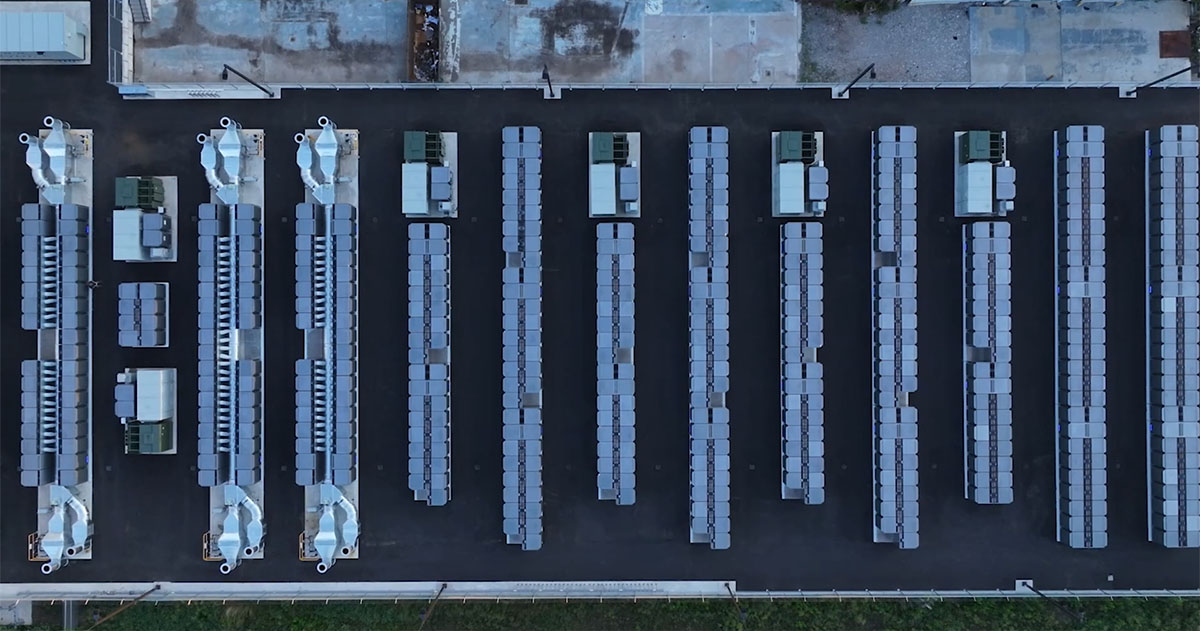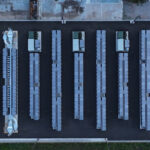The US Department of Energy (DOE) predicts energy consumption could triple by 2028, driven primarily by AI data centers and hyperscalers that need hundreds of megawatts or even gigawatts of capacity.
This rapid growth is forcing a fundamental shift in how we think about power infrastructure.
And for data centers, power availability has become the primary site selection factor, leapfrogging traditional priorities like low latency and fiber connectivity.
“The rapid growth of AI is driving massive demand for data center capacity,” said Camilla Rizzi of Plug and Play Tech Centers, in a recent webinar presented by the DOE’s Western Region Technical Assistance Partnership (TAP). The webinar also included representatives from Oilon US, Bloom Energy and the DOE’s Western Region TAP.
For example, Amazon alone is spending $10 billion to build just two data centers in Mississippi, Rizzi noted. Meanwhile, Meta is planning a 5-gigawatt data center the size of Manhattan in Louisiana.
Spiky Loads Demand Instantaneous Response
One of the biggest challenges for data center power is that AI workloads have extreme variability in their power demands. A single server’s power load might fluctuate from 15kW to 30kW within seconds, scaling up to 50-100MW swings at the data center level, according to Bloom Energy tests. In terms of capacity, that could mean going from 20% of provisioned power to 150% — and the traditional grid infrastructure can’t handle that kind of swing.
Data centers need power solutions that can match the “spikiness” of those loads. Many have been addressing this by adding batteries, but batteries have a limited number of charge-discharge cycles.
“Fuel cells and supercapacitors can easily handle this kind of load profile,” Bloom Energy’s Kaushal Biligiri said, noting that this combination can provide instantaneous responses to load changes, achieving 200,000+ charge cycles while maintaining 99.9% availability.
Capturing Heat Drives Remarkable Efficiency
Efficiency becomes a pressing concern when power is costly and time-consuming to obtain.
Here, too, fuel cells have an advantage. Because solid oxide fuel cells (SOFCs) generate heat, it’s possible to capture that heat and use it. By combining heat and power applications, fuel cell efficiency rises from 54% to 85-90%.
For example, Biligiri said, “We can use fuel cells integrated with absorption chillers, generate chilled water and run it through the liquid cooling loop. That can drive a 10 to 15% improvement in the power usage effectiveness (PUE) value, which is an important sustainability metric for any data center.”
In other parts of the world, industrial heat pumps are recovering massive amounts of waste heat from data centers and using it for local home and office heating.
Oilon US’s Morgan Copeland noted that a Microsoft project in Helsinki uses 32 heat pumps across two data centers to supply district heating for 100,000 people. “That equates to roughly a 1% to 3% greenhouse gas emission reduction for the entire country of Finland from just two data centers,” Copeland said.
Get Modular and Get Going
As data centers follow utility pricing around the country (or around the globe), there’s an increasing demand for containerized, turnkey solutions to help those data centers get up and running quickly.
Copeland noted that heat pumps delivered on skids are in demand because they can be delivered, installed, and brought online rapidly anywhere.
Biligiri added that the same is true of modular fuel cell units: They enable rapid installation of power generation capacity.
“Fuel cells arrive on site on a skid, and we just stack them on steel structures,” Biligiri said.
Islands on the Rise
Grid interconnection delays are pushing data centers toward island microgrids. In these cases, fuel cells run completely off-grid in load-following mode.
“Every utility requires an interconnection agreement before it can accept a distributed energy resource onto its network. And that takes time,” said Biligiri. In the meantime, onsite fuel cells from Bloom Energy can operate as islanded microgrids. This means power generation is completely off-grid, with fuel cells sitting next to the data center generating power 24/7, load-following the data center’s needs.
After the data center operator reaches an interconnection agreement with the utility, this microgrid can be connected to the utility’s grid. Then the fuel cells can provide supplemental power to the grid, increasing reliability and capacity for the entire region.
Urban-Friendly Solutions
As data centers grow, land use becomes a significant factor. This is especially important in urban or suburban locations, where real estate is at a premium.
Fuel cells offer high power density, can be stacked in layers and are extremely quiet, operating at 65 decibels from 10 feet away. “You can stand next to a fuel cell while it’s generating power and have a conversation without any noise issues,” said Biligiri.
There is almost no nitrogen oxide (NOX) pollution because the operating temperature of an SOFC is too low for the NOX reaction. There’s also no sulfur oxide pollution (SOX) because the sulfur-containing odorants have been filtered out before the natural gas reaches the fuel cell. And, with an enclosed system that has few moving parts, there are no volatile organic compounds (VOCs) emitted due to methane leaks.
Efficient, Reliable Onsite Energy — Today
A recognized pioneer in fuel cells for over two decades, Bloom Energy is already supplying over 400 MW of power generation to data centers worldwide.
With rapidly deployable, efficient, and reliable fuel cells from Bloom, data center builders remove a major obstacle to rapid, competitive growth.










